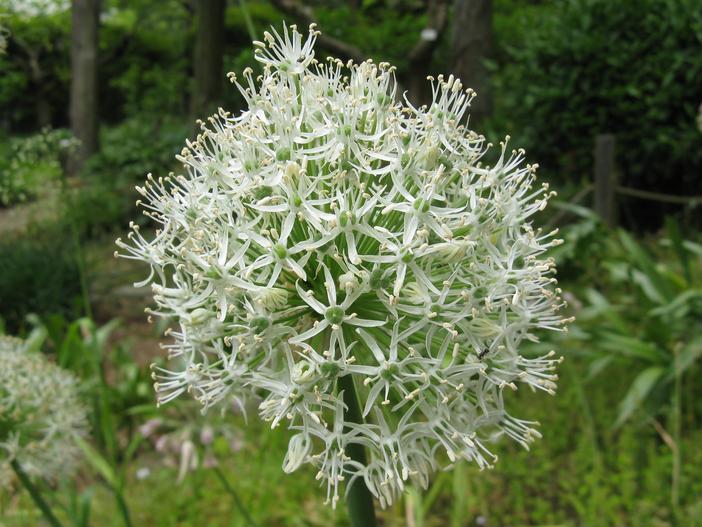Persian Shallot
(Allium stipitatum)
Persian Shallot (Allium stipitatum)
/
/

KENPEI
CC BY-SA 3.0
Image By:
KENPEI
Recorded By:
Copyright:
CC BY-SA 3.0
Copyright Notice:
Photo by: KENPEI | License Type: CC BY-SA 3.0 | License URL: http://creativecommons.org/licenses/by-sa/3.0/ | Uploader: Kenraiz | Publisher: Wikipedia Commons












Estimated Native Range
Summary
Allium stipitatum, commonly known as Persian Shallot, is a deciduous perennial bulb native to the steppes and mountain slopes of Western and Central Asia, including Iran and Turkmenistan. It typically grows from bulbs 3 to 6 cm in diameter, which have blackish, paper-like tunics. The plant reaches a height of 60–150 cm (24–59 in) with flowers arranged in an umbel, approximately 8–12 cm (3.1–4.7 in) in diameter, atop tall stems, giving it the nickname ’drumstick allium’. Each umbel consists of numerous star-shaped flowers with six lilac to purple tepals, each about 2.5 to 5 cm long; white variants also exist. The flowering season is late spring to early summer, and the flowers are quite showy, attracting pollinators such as bees and butterflies.
Persian Shallot is valued for its ornamental flowers, which add vertical interest and a burst of color to garden borders and beds. It is also used in dried flower arrangements. This allium is relatively low-maintenance, tolerating a range of soil conditions, though it prefers well-drained soil. It requires full sun to part shade and can be watered sparingly, making it suitable for xeriscaping. While generally pest-free, it can be susceptible to onion fly and thrips. It is not known to be invasive and does not have aggressive roots, making it a safe choice for most gardens.CC BY-SA 4.0
Persian Shallot is valued for its ornamental flowers, which add vertical interest and a burst of color to garden borders and beds. It is also used in dried flower arrangements. This allium is relatively low-maintenance, tolerating a range of soil conditions, though it prefers well-drained soil. It requires full sun to part shade and can be watered sparingly, making it suitable for xeriscaping. While generally pest-free, it can be susceptible to onion fly and thrips. It is not known to be invasive and does not have aggressive roots, making it a safe choice for most gardens.CC BY-SA 4.0
Plant Description
- Plant Type: Bulb
- Height: 3-4 feet
- Width: 0.5-0.7 feet
- Growth Rate: Moderate
- Flower Color: Purple, White, Pink
- Flowering Season: Spring, Summer
- Leaf Retention: Deciduous
Growth Requirements
- Sun: Full Sun, Part Shade
- Water: Low, Medium
- Drainage: Medium, Fast
Common Uses
Bee Garden, Bird Garden, Butterfly Garden, Deer Resistant, Drought Tolerant, Edible*Disclaimer: Easyscape's listed plant edibility is for informational use. Always verify the safety and proper identification of any plant before consumption., Fragrant, Hummingbird Garden, Low Maintenance, Potted Plant, Rabbit Resistant, Rock Garden, Showy Flowers
Natural Habitat
Steppes and mountain slopes of Western and Central Asia
Other Names
Common Names: Stiel-Lauch
Scientific Names: , Allium stipitatum, Allium hirtifolium, Allium atropurpureum var. hirtulum,
GBIF Accepted Name: Allium stipitatum Regel